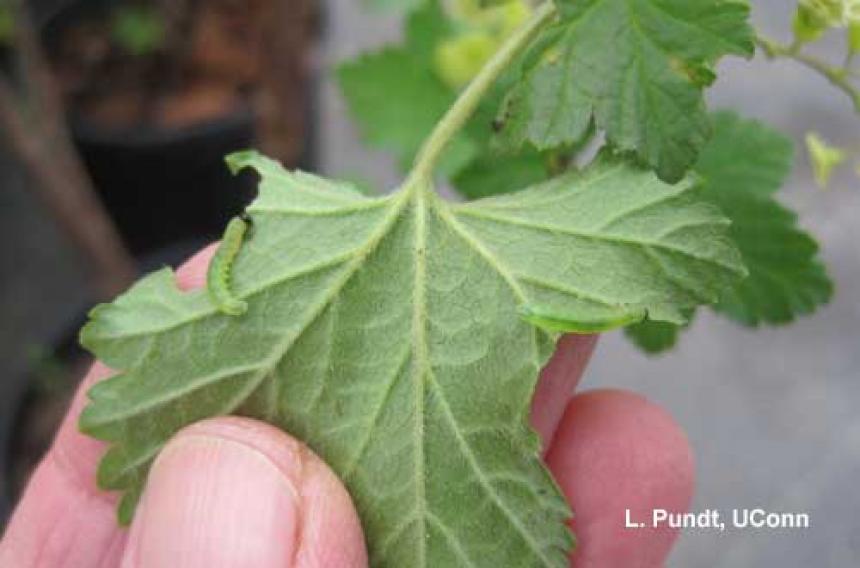The currant sawfly is a pest of currants and gooseberries. The larvae chewing on currant leaves in the photo are sawfly, not caterpillars. It is important to distinguish between the two when selecting insecticides. For example, bacillus thuringiensis (BT) will work against caterpillars but not sawflies. Sawfly larvae usually have six or more pair of prolegs (fleshy protuberances on their underside) without the terminal hooks of caterpillar prolegs. Sawfly larvae usually feed together in small groups. Adults are thick waisted, non- stinging wasps with slender antennae. The eggs are elongate and white, laid along the leaf veins on the underside of leaves.
Just hatched larvae are uniformly light green (photo). As they grow, the larvae develop numerous black spots. Damage can be extensive to currents and gooseberries as they can rapidly defoliate plants early in the season.
